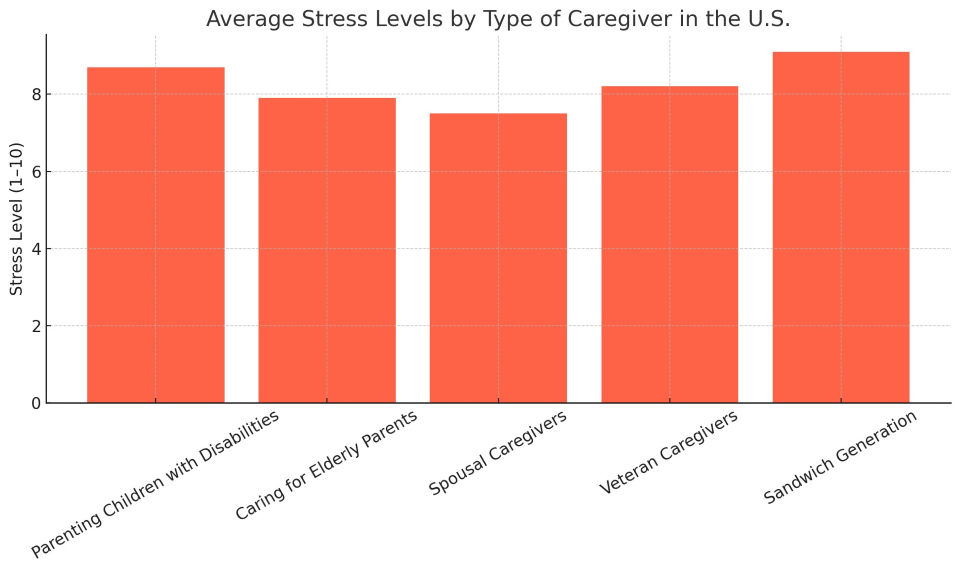Across the United States, millions of individuals provide unpaid care to loved ones with chronic illnesses, disabilities, or age-related conditions. These caregivers—often family members—sacrifice time, money, and emotional energy, frequently with little recognition or support. Enter the Caregiver Support Program: a critical network of services designed to ease this burden and empower caregivers through resources, training, and financial assistance.
This article explores caregiver support programs in the U.S., who qualifies, what services are offered, the realities caregivers face, and why expanded support is more important than ever.
Who Are Family Caregivers?
A family caregiver is anyone who helps another person—usually a family member—manage daily living activities due to age, illness, or disability. In 2023, over 53 million Americans identified as informal caregivers. These roles include:
-
Adult children caring for aging parents
-
Parents of children with physical or cognitive disabilities
-
Spouses supporting partners with chronic illness
-
Veterans' families managing PTSD or mobility issues
Caregiving often comes with emotional stress, financial hardship, and physical strain—especially for those who juggle employment, parenting, and elder care simultaneously.
Types of Caregiver Support Programs
Caregiver support in the U.S. is offered through a patchwork of federal, state, and nonprofit programs. Here are the major categories:
1. National Family Caregiver Support Program (NFCSP)
Administered by the Administration for Community Living (ACL), this program provides:
-
Information and referrals
-
Counseling and support groups
-
Respite care (short-term relief)
-
Caregiver training
-
Limited financial assistance
2. Veteran Caregiver Support (VA)
The VA Caregiver Support Program includes:
Eligibility varies depending on the veteran’s service-related condition.
3. State and Local Programs
Many states offer assistance through:
4. Employer-Based Programs
Some private employers offer:
Unfortunately, access remains inconsistent, and many caregivers are unaware of available resources.
Understanding the Emotional Toll
Caregivers often suffer silently. Emotional strain, isolation, and burnout are all too common. Different caregiver roles carry different stress loads.
The Sandwich Generation—people caring for both children and aging parents—report the highest stress.
Case Study: A Caregiver in Crisis
Name: Lisa, 38, from Missouri
Situation: Working full-time while caring for her father with dementia and two children under 10
Challenges: Sleepless nights, financial strain from part-time caregiving help, no respite support
Resolution: Connected with a local Area Agency on Aging, enrolled in the National Family Caregiver Support Program, and now receives:
Outcome: Reduced emotional distress and improved communication with her children and workplace.
Stress Levels Among U.S. Caregivers by Role

This chart illustrates how caregiving affects different populations, highlighting the need for tailored support services across caregiver types.
What Services Do Support Programs Offer?
Services vary by program and region but typically include:
-
Respite care: Short-term breaks for caregivers, provided in-home or through adult day programs
-
Training and education: Care techniques, stress management, dementia care, safety protocols
-
Emotional support: Group therapy, hotlines, peer forums, grief counseling
-
Legal and financial advice: Power of attorney, estate planning, Medicaid navigation
-
Home modifications: Assistance installing safety equipment like ramps or grab bars
Barriers to Access
Despite the growing need, caregiver support programs remain underutilized due to:
-
Lack of awareness
-
Complex application processes
-
Long waitlists for respite care
-
Limited state funding
-
Cultural stigma around asking for help
Advocates are calling for centralized information portals and “presumptive eligibility” models where caregivers are pre-approved based on caregiving roles or income.
Legislation and Policy Developments
Recent bills and initiatives signal growing recognition of the caregiver crisis:
-
RAISE Family Caregivers Act: Created a national caregiving strategy for workforce support, training, and financial aid
-
Credit for Caring Act (proposed): Would provide a federal tax credit up to $5,000 for eligible working caregivers
-
State-Level Action: Some states (e.g., Washington, Hawaii) have passed paid caregiver leave laws and stipend programs for family caregivers
The Future of Caregiver Support
Experts agree: without systemic investment, caregiver burnout will escalate, and healthcare systems will face severe strain. Promising trends include:
-
AI-powered monitoring to reduce hands-on hours
-
Telehealth expansion for counseling and medical oversight
-
Digital caregiver training platforms
-
Employer partnerships to recognize and accommodate caregiving employees
More states are considering universal caregiver stipends and caregiver "sick days" as part of healthcare reform discussions.
Caregivers are the unsung heroes of American healthcare. They fill the gaps left by formal systems, often at great personal cost. Support programs—when known and accessible—can transform a caregiver’s experience from one of exhaustion to empowerment.
But more work remains. Investment, innovation, and awareness are critical to ensure caregivers are no longer invisible—but recognized, supported, and protected.